I am a special education teacher interested in learning more about educating for inclusion. How can I set up my small groups to target skills that will serve my students well in the classroom?
Answered by Renita Paranjape, M.Ed., BCBA, Director, Intake, IBI and Group and Transition Services, Geneva Centre for Autism
Presenting a special guest post by Renita Paranjape from ASAT.
Preparing students for group instruction in inclusion classrooms requires careful consideration of the responses required in that setting as well as the strengths and needs of the child with autism. What follows are some considerations that may ease the transition of students from one-to-one instruction to group-based instruction within inclusion classrooms.
Investigate the next setting
Take time to visit and observe group instruction in the inclusion classroom. There are a few questions to keep in mind when observing the inclusion setting, including:
- What is the content of the group instruction?
- How large are the groups?
- How does the teacher engage the students (e.g., visual stimuli, choral responding)?
- How long are the group activities?
- How often are students required to respond during group?
- Are there reinforcement systems in place within the group lessons?
- What are the teacher’s general behavioral and learning expectations of the students during group instruction?
Once you have a clear idea of what transpires during group instruction, attempt to replicate, as closely as possible, the activities observed in the inclusion environment during small-group lessons.
Setting up the group
Here are some pointers for setting up group instruction:
- Group children according to their skill level so that those who require skill building in more foundational skills are grouped together, while the students with more advanced skills are placed together.
- Alternatively, you may want to consider mixing students by skill level, so that students with more advanced skills can serve as a model for students who require models of responses during the lesson.
- All students should have a clear view of the teacher and the instructional material, with distracting items kept to a minimum.
- One adult should be the “teacher,” delivering all instructions in front of the group and providing the reinforcers to the students.
- Position other adults behind the group to serve as “prompters” of responses. These adults should stand, not sit, behind the students, fading their proximity to the students as independence increases. These adults should only prompt if necessary, and the students should be expected to follow the instructions provided by the teacher who is leading the group.
- Have available the student’s individualized motivation system in view of the student. The teacher leading the lesson should provide the reinforcers to the students based on the student’s individualized program.
- The other adult or “prompter” can also record data on the responses of the learners during group instruction.
- The teacher of the group and the prompters should communicate regularly before and after the group lessons to identify roles and student goals. Discussion should not occur during the lesson.
Readiness skills for small group instruction
The following are a few examples of what learners may benefit from in order to participate in group instruction, but they are not necessarily prerequisites. Some of these goals require group instruction in order for the goals to be taught, whereas other goals can be introduced in smaller groups or in one-to-one instruction.
- Attending to the teacher with peers present. In most ABA programs, attending is one of the first foundational skills that is taught. This is accomplished either by teaching students to provide eye contact or teaching them to orient toward the communicative partner. Once this skill is established, the next step for group instruction would be to teach attending even when there are peers present and when the teacher is standing and moving around the classroom.
- Tolerating the presence of peers. Since small-group instruction requires the presence of other students, it is important to assess whether the student can sit alongside a peer without being distracted.
- Sitting for longer periods of time without frequent breaks. Group instruction will require the student to sit for longer periods of time. Collect baseline data on how long the student will sit appropriately before accessing a reinforcer; then systematically increase that time so that the student can sit for longer periods of time to earn access to a bigger reinforcer (e.g., recess).
- Remaining on task for longer periods of time. This may seem similar to number 3 above, but it is not only important to consider how long your students can sit appropriately, but also how long your students will work efficiently before becoming off task and or requiring breaks. In small group settings, students are typically required to complete independent seatwork for upwards of 15 minutes or more. As a readiness skill, assess how long your students can remain on task and systematically increase how long they are required to work independently.
- Preparing the student for thinner schedules of reinforcement. Consider your students’ current schedule of reinforcement and develop a plan to thin that schedule. This would apply primarily to appropriate behaviour, such as attending and sitting appropriately, as correct responses in group would likely be reinforced on a continuous schedule initially.
- Responding to name and following distal instructions. Can your students respond to their names from varying distances and in different contexts? Can they follow directions given from afar? In addition to being able respond to their name in a classroom setting, students must also learn to not respond in certain situations. Distinguishing between, and responding to, instructions such as “everybody,” “[student’s name]” and “[other student’s name]” are key foundational skills for small-group instruction.
- Following complex instructions. Your students should not only be able to complete one-step directions (e.g., “Get a pencil”), and two-step directions (“Get a pencil and write your name”), but they should also be taught to follow even more complex directions (e.g., “Get a pencil, turn to page 5 of your workbook, and write your name at the top”).
- Waiting for attention and instructions. When a student makes the transition from one-to-one instruction to a group setting, the teacher’s focus is no longer solely on one student, but he or she is balancing his/her attention from one student to another. It is important to teach the student how to occupy his or her time without engaging in stereotypic, or other challenging behavior, as the teacher’s attention is diverted.
- Hand raising. Hand raising is a skill that requires attending, performing a gross motor action, inhibition of responding until cued by teacher, and discrimination of instructions. Initially, students can learn to raise their hands to access a preferred item with an embedded prompt in the instruction (e.g., “Raise your hand if you want candy!”). The instructions can then become increasingly more complex and students can learn to raise their hands to answer questions, to refrain from raising their hands when they are not able to answer a particular question, to request an item they might need for a task, and to volunteer to participate in an activity.
- Observational Learning. One of the benefits of small-group instruction is the abundance of opportunities to learn appropriate responses by attending to the responses of other members of the group. Often times, students with autism need explicit instruction in attending to the responses of others, in differentiating whether those responses were appropriate based on teacher feedback, and in being able to repeat those correct responses when directed by the teacher.
- Choral Responding. Another key response of small-group instruction is being able to say responses aloud and in unison with other students. For example, the teacher may say, “Everyone tell me what is two times two,” and all of the students would be expected to say, “Four.” This skill can first be introduced in one-to-one instruction.
Effective teaching strategies to include in small-group instruction
The research in small-group instruction has identified specific strategies that have been found to be particularly effective for learners to acquire skills in a group setting (e.g., Heward & Wood, 1989; Kamps et. al, 1991).
- Creating many opportunities for learners to respond: Given that the density of instructions will likely be less in a group situation than in a one-to-one teaching interaction, it is important to create as many opportunities as possible for your students to practice responding, and, in turn, acquire skills. Ensure that there are many instructions delivered for each student.
- Frequent rotation of materials: This is a necessary strategy to help alleviate boredom with the content of the curriculum, and it also helps to promote generalization of responding across various stimuli.
- Interspersing known targets with unknown targets: This strategy creates a momentum for responding fluently, provides the opportunity for reinforcement to occur, and also ensures that mastered targets are maintained.
- Choral responding: Having your students respond in unison is a useful strategy, and is important to target, because it occurs frequently in most general education settings. It is beneficial for learners, as it allows them to have more opportunities to respond, as well as allows them to be cued by their fellow classmates rather than their teacher.
- Random responding: Random responding refers to presenting instructions in an unpredictable format so that students are not aware of when they might be called upon. This method can improve attention and motivation, as students will not be able to predict when it is their turn to respond.
- Repeating peer responses: Requesting that students repeat the correct responses of their classmates can help further observational learning skills by requiring students to attend to and assimilate the responses of others.
- Student-to-student interaction: Another effective teaching strategy is to promote interaction among students. Specifically, students can learn to listen and repeat each other’s responses to general curriculum-related questions, ask peers to clarify if an instruction was missed, or ask peers for items needed for a task.
Small-group instruction can be a highly effective way to prepare students for less restrictive settings. With appropriate environmental manipulations, as well as effective teaching strategies, students who participate in group instruction can acquire skills needed for fuller inclusion.
References
Carnahan, C., Musti-Rao, S., & Bailey, J. (2009). Promoting active engagement in small group learning experiences for students with autism and significant learning needs. Education and Treatment of Children, 32(1), 37-61.
Harrower, J. K., & Dunlap, G. (2001). Including children with autism in general education classrooms: A review of effective strategies. Behavior Modification, 25(5), 762-784.
Heward, W. L., Gardner, R., Cavanaugh, R. A., Courson, F. H., Grossi, T. A., & Barbetta, P. M.(1996). Everyone participates in class: Using response cards to increase active student response. Teaching Exceptional Children, 28(2), 4-10.
Heward, W. L., & Wood, C. L. (2009). Let’s make some noise! Using choral responding to improve the effectiveness of group instruction. In W. L. Heward, Exceptional children: An introduction to special education (9th edition) (pp 158-159). Upper Saddle River, New Jersey: Merrill-Pearson Education.
Kamps, D. M., Walker, D., Dugan, E. P., Leonard, B. R., Thibadeau, S. F., Marshall, K., & Grossnickle, L. (1991). Small group instruction for school-aged students with autism and developmental disabilities. Focus on Autism and other Developmental Disabilities, 6(4), 1-18.
Ledford, J. R., Gast, D. L., Luscre, D., & Ayres, K. M. (2008). Observational and incidental learning by children with autism during small group instruction. Journal of Autism and Developmental Disorders, 86-103.
Rotholz, D. A. (1990). Current considerations on the use of one-to-one instruction with autistic students: Review and recommendations. Focus on Autism and other Developmental Disabilities, 5(3), 1-5.
Renita Paranjape, MEd, BCBA, is a Board Member of ASAT. Renita joined the ASAT Board of Directors in 2015. Prior to serving as a Board Member, Renita served as ASAT’s Social Media Coordinator. Renita received her Master’s degree in Developmental Psychology and Education from the University of Toronto, and completed courses in Behavior Analysis from the University of North Texas, in 2009. Since 2002, Renita has worked in the fields of ABA and ASD in several capacities, including supervising an ABA program in a private school, supervising ASD consultants in public schools, and managing an ABA program in group homes serving adults with severe behavior disorders. In her current role, Renita has been fulfilling the role of Director of Intake, IBI Services, and Group and Transition Services at Geneva Centre for Autism in Toronto. Renita is passionate about the dissemination of science based treatments for autism, and working with families to access those resources.





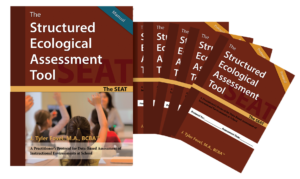
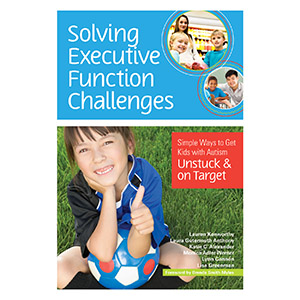
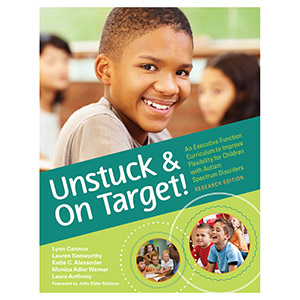 Pictured are two of our featured curriculum books,
Pictured are two of our featured curriculum books, 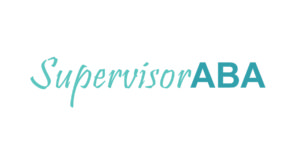
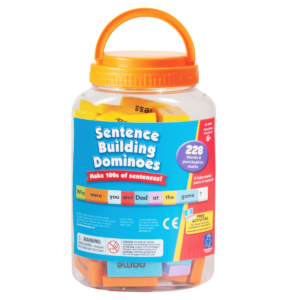 adjectives, adverbs, conjunctions, prepositions and punctuation marks — the possibilities are endless! Dominoes come packed in a handy storage bucket.
adjectives, adverbs, conjunctions, prepositions and punctuation marks — the possibilities are endless! Dominoes come packed in a handy storage bucket.